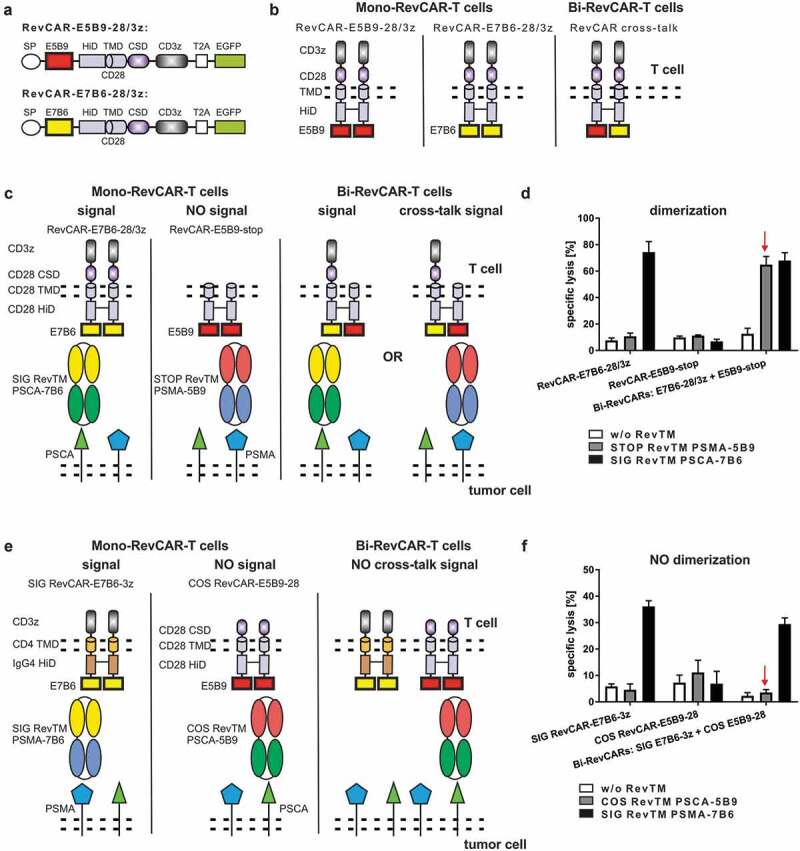Figure 5.

Design of RevCARs for “AND” gate targeting.
(a) Schematic structure of RevCAR-E5B9-28/3z and RevCAR-E7B6-28/3z. They consist of signal peptide (SP), peptide epitope E5B9 or E7B6, hinge (HiD), transmembrane (TMD), and costimulatory (CSD) domain. T2A (Thosea asigna virus) peptide enables EGFP expression. (b) Schematic display of RevCAR dimerization. RevCARs form homodimers, when separately transduced in one T cell. Transduction of both RevCAR-E5B9-28/3z and RevCAR-E7B6-28/3z in one T cell results in heterodimers. (c–f) Test for RevCAR dimerization via killing assay. (c, e) Experimental setup is shown. (c) T cells were transduced with either RevCAR-E7B6-28/3z, comprising CD28 and CD3 signaling domains, or RevCAR-E5B9-stop, lacking any signaling domains, or both together. Both RevCAR-E7B6-28/3z and RevCAR-E5B9-stop contain identical HiD and TMD. When co-transduced, the RevCAR-E5B9-stop can trigger T cell mediated tumor cell killing upon co-cultivation with the STOP RevTM by mediating a cross-talk signal via RevCAR-E7B6-28/3z. (e) In addition, T cells were transduced with either signaling SIG RevCAR-E7B6-3z or costimulatory COS RevCAR-E5B9-28 or both together. Both RevCARs differ with respect to HiD, TMD, and intracellular domain. In contrast to (c), cross-talk signaling by COS RevCAR-E5B9-28 via SIG RevCAR-E7B6-3z is prevented. (d, f) Mono- or Bi-RevCAR-T cells were incubated with LNCaP (d) or PC3 (f) tumor cells with or without indicated RevTMs in a chromium-release assay. Specific lysis is shown for one representative donor.
